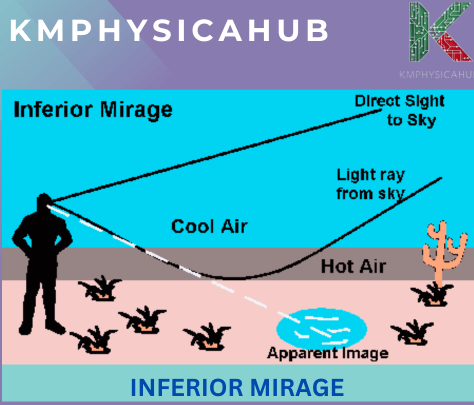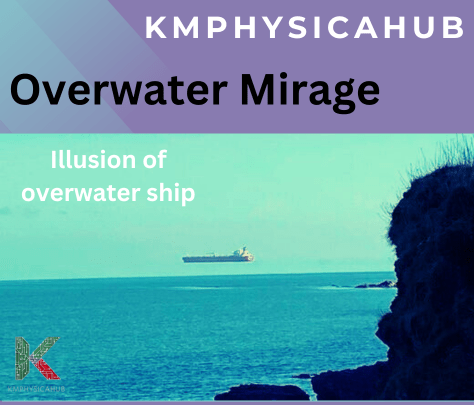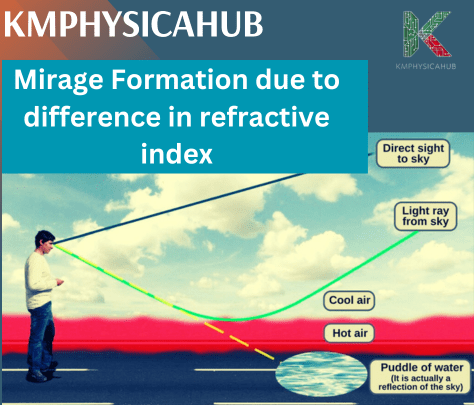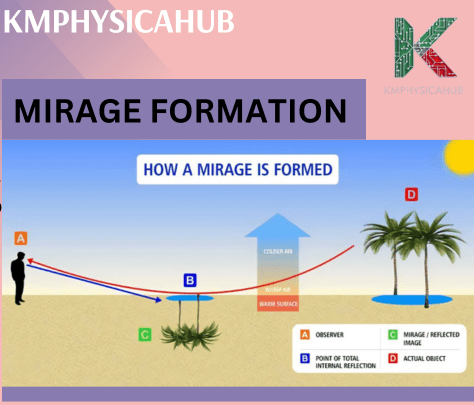The Art of Deception: How Different Types of Mirages Trick our Eyes
There is always something astonishing nearby; up above the ground, below the stars, or through a lens. However, out of all of these, mirages are some of the most fascinating, often appearing as if they belong in a dream world. They are optical illusions that take place mostly when traveling along desert region or on a black tarmac road during sunny and dry days. These are illusions that may easily trick the naked human eye and knowing the scientific basis of it only adds more excitement.
What Causes Mirages?
A mirage can be defined as an optical phenomenon in which light is bent and hence the image formed is shifted from the true one or in other words it is a natural event in which the light bends round objects and the sky.
Mirages are interesting types of optical illusion that formed as a result of light refraction in the presence of differences in the air temperature.
Examples:
- Road Mirage
- Desert Mirage
Principle of Mirage Formation
Refraction and Density Variation:
A mirage is formed when two layers of air have different temperature and/or thickness. These distinctions make light to turn or bend when it is passing through the air or what is referred to as refraction. The bending takes place due to changes in density of the media which in turn determines the speed of light.
Refraction: When light is passing through these layers, having different densities, it shifts its direction through the process called refraction. Refraction leads to a shift of an object as perceived by the observer. The light rays pass through the air containing different temperatures in different speeds.
The principles of refraction is when light travels from a lighter area to a darker area it bends or refracts. The bending happens because while the light is in the path, the speed of the light decreases and thus changes its directions.
Temperature Gradient:
Air temperature is affected by altitude level. In a vertical direction, for instance, as the altitude increases or decreases from sea level, the air temperature increases or decreases respectively. This gives rise to a temperature difference, a condition where some parts of the surrounding air and the involved layers differ in either or both temperature and density.

Types of Mirages:
1. Inferior Mirages (Desert mirage)
These are the most common mirages. They occur in arid environments, like deserts. In the case of an inferior mirage, the image formed appears beneath the actual object. The real object can be the blue sky or any distant (bluish) object in the same direction. Light rays from the top of the object arrive lower than those from the bottom, creating an upside-down image. It seems like a water puddle reflecting the sky.

Heat Haze:
Heat haze is a specific type of inferior mirage. It occurs when you view objects through hot air, such as exhaust gases or heated asphalt. Convection causes temperature variations, resulting in a gradient in the air’s refractive index. The shimmering effect blurs the image, making it difficult to resolve objects. Light from the sky curves upward toward cooler air, creating the illusion of a water surface on the road.
2. Superior Mirages:
These mirages appear above the actual object. They occur when temperature inversions cause light rays to curve upward. Superior mirages can create elongated or stacked images of distant objects.

Over Water
If you are near water bodies such as lakes or sea, look at the middle of the horizon. If the air above the water is warmer than the water, then what you may see is called a mirage. The mirage could create an inverted image of distant boats, islands, or coastal features. Superior mirages can also occur over water, creating elongated images of ships or landmasses.
The famous “Fata Morgana” is a type of superior mirage with rapidly changing, vertically stacked images. Often observed in polar regions or over large bodies of water.
Example: The illusion of floating cities or castles.

3. Road Mirage:
The “fake water” which you usually encounter on roads in the midst of a hot and sunny day is nothing but a mirage. Here’s how it works:
Refraction of Light:
Different layers of air affect light rays through bending, which is referred to as refraction. Air close to the road gets heated and becomes warmer compared to cooler air above the road surface.
Denser vs. Less Dense Air:
Roads, especially black ones, absorb more heat and become hotter. This creates a thin layer of warm air just above the road surface. Above this warm layer, the air is cooler and denser.
Mirage Formation:
The difference in refractive index between the hot air near the road and the cooler air above causes light to bend. The boundary acts like a mirror, reflecting distant objects. You see an illusion of water (a puddle) on the road, but it’s not real water!

So next time you encounter this highway mirage, remember it’s all about light, air, and temperature playing tricks on our eyes.

Fun Facts about Mirages
Fata Morgana: The Fata Morgana is considered as one of the most complex and intricate kind of superior image and is named after Morgan le Fay. This one forms superimposed and elongated images of remote objects which may appear as fabulous or elongated ones.
Pilots and Mariners: The illusions of the mirage are capable of fooling not only the land traveler but also the pilot, and the mariner. It can make objects behind appear closer and some objects such as ships look like they are flying in the air.
Not Hallucinations: Indeed, mirages differ from hallucinations as the latter are mentally perceived whereas the former are real events that can even be photographed.
Different Landscapes: Conventional knowledge of mirage tells you that it occurs in the desert but it is also possible to observe it in polar regions mainly on ice-covered land or sea.
No Water Involved: In the eyes of the public the water body looks so real while in fact it is nothing but a trick of light and air.
Conclusion:
Mirages are mesmerizing as they enchant the observer’s eye with their rather magical simplicity of light and air, yet their scientific sophistication. The breakdown of these processes is not only informative and clears misconceptions but also makes one realize that there are many magnificent things one never even imagines to exist in the natural world. Mirages as momentary visions on a hot summer days near landscape or on the freezing expanse of the seascape.
FAQs
Q1: Can mirages occur at night?
A: Mirages typically require a strong temperature gradient, usually produced by the sun heating the ground, making nighttime occurrences rare. However, refraction phenomena under certain conditions at sea have been reported at night.
Q2: Are mirages dangerous?
A: Although mirages themselves are not considered a danger, they can cause hazardous perceptions like drivers believing there is water on the road and mariners steering by false images.
Q3: Can the photographers take picture of a mirage?
A: Absolutely. Mirages are real physical phenomena and for this reason, they can be photographed.
Q4: Can animals see mirages?
A: Yes, animals can perceive mirages as well. Some desert animals have evolved ways to find real water sources despite the deceptive illusions.

